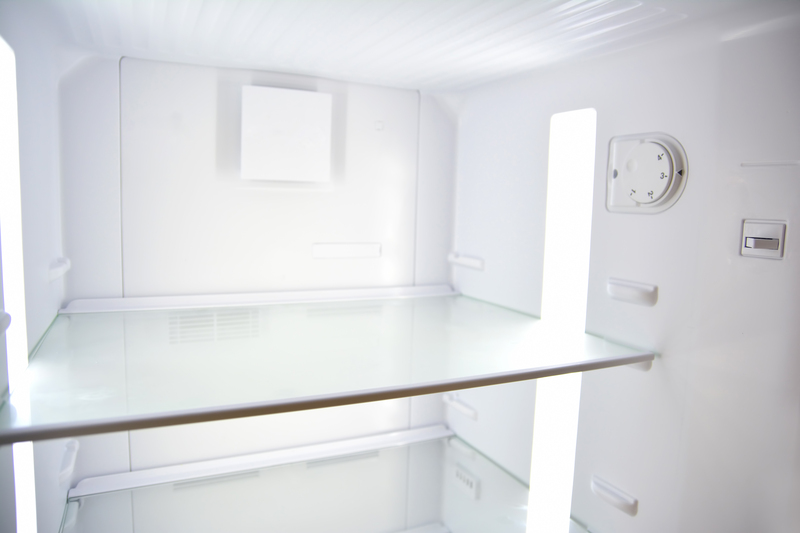Discover the Basics of Kinetic Lifting and How It Transforms Your Fitness Routine
Kinetic lifting is rapidly emerging as a staple technique in modern fitness regimens. By integrating dynamic movement, functional strength, and core stability, kinetic lifting takes your usual workouts to the next level. In this comprehensive guide, we'll explore the fundamentals, principles, benefits, and expert tips on how to incorporate kinetic lifts into your routine for dramatic results.
What is Kinetic Lifting?
Kinetic lifting refers to a style of strength training that emphasizes dynamic movement patterns and efficient transfer of energy throughout the body. Unlike traditional static lifts where the focus is on isolating a single muscle group, kinetic lifting encourages the use of multiple muscle groups in coordinated movements. This approach improves functional strength, balance, and athletic performance.
- Dynamic, compound movements
- Focuses on energy transfer across major joints
- Engages the core throughout the lift
- Improves proprioception (awareness of body in space)
- Builds resilience and mobility
Key point: The main goal of kinetic lifting is to train your body the way it naturally moves, resulting in more effective and functional fitness.

The Science Behind Kinetic Lifting Techniques
Kinetic energy is energy possessed by a moving object. In kinetic lifting, the body acts as a system where energy gets generated, transferred, and absorbed through coordinated movement sequences. Mastering these aspects not only increases power but also minimizes risk of injury by making movement smoother and more controlled.
Energy Chains in Kinetic Lifting
Functional lifts in kinetic training engage what's called "kinetic chains"--connected series of muscles and joints that work together to produce movement. For example, a kettlebell swing doesn't just target your arms. It recruits your glutes, core, hips, shoulders, and grip in a fluid, explosive action. Understanding kinetic chains helps in:
- Maximizing force output
- Improving coordination and timing
- Building joint stability and flexibility
- Reducing compensation and overuse injuries
Benefits of Adding Kinetic Lifting To Your Fitness Routine
Kinetic training can transform the way you move and feel. Below are only a few of the many positive effects:
1. Enhanced Functional Strength
- Translates to real-life motion: Movements such as lifting groceries, playing sports, or even walking and climbing stairs become easier.
2. Greater Core Activation
- Nearly every kinetic lift uses deep core muscles for stabilization, creating a more effective total-body workout.
3. Improved Balance & Coordination
- By engaging multiple muscle groups and moving in different planes, kinetic lifts boost proprioception and balance.
4. Injury Prevention
- Better awareness, balanced muscle activation, and joint support minimize common overuse injuries.
5. Efficient Calorie Burn
- Compound, dynamic movements incinerate calories and increase metabolic rate for hours after your workout.
Getting Started: The Fundamentals of Kinetic Lifting
Transforming your training with kinetic lifts doesn't mean overhauling your entire routine right away. Start by mastering the basics and gradually adding complexity. Here's how:
Focus on Form and Mechanics
- Perfect your bodyweight basics (like squats, push-ups, lunges).
- Pay special attention to joint alignment and posture.
- Use mirrors or record yourself to check form.
Integrate Multi-Joint Movements
- Replace single-joint lifts (e.g., bicep curls) with compound lifts (e.g., deadlifts, kettlebell swings).
- Transition from machines to free weights for a challenge that requires full-body engagement.
Learn to Control Tempo and Flow
- Add pauses, slow-and-controlled reps, or explosive actions, focusing on how momentum and muscle tension change with movement.
Start with Simple Equipment
- Popular items: kettlebells, medicine balls, dumbbells, resistance bands.
- Begin with lighter weights as you practice new kinetic movements.
Classic Kinetic Lifting Exercises
Ready to try some kinetic lifts? Start by including these proven movements in your routine:
Kettlebell Swing
- Delivers explosive power from the hips.
- Engages glutes, hamstrings, core, shoulders and grip.
- Great for building functional strength and stamina.
Medicine Ball Slam
- Transmits force from the legs, through the core, into the arms.
- Excellent for total-body explosiveness and calorie burn.
Turkish Get-Up
- Teaches deliberate movement and stability throughout all body segments.
- Perfect for improving coordination, mobility, and core strength.
Clean and Press (Barbell or Dumbbell)
- Combines a dynamic pull from the floor with an overhead press.
- Integrates multiple muscle groups with fluid kinetic transfer.
Push-Up With Rotation
- Adds a rotational element for additional core and shoulder activation.
- Improves stability and spine mobility.
How to Structure a Kinetic Lifting Workout
Creating an effective kinetic lifting session is about layering movement complexity and intensity judiciously. Use this structure:
- Warm-Up: Incorporate dynamic stretches such as lunges with rotation, arm circles, and leg swings.
- Movement Prep: Practice activation drills for hips, core, and shoulders--think glute bridges and band pull-aparts.
- Main Workout: Choose 3-5 kinetic lifts, performing each for 8-15 reps, for 3-4 rounds. Rest 60-90 seconds between sets.
- Cool Down: Finish with mobility and flexibility work to help the body recover.
Tip: Beginners can start with two kinetic-focused sessions per week. As you adapt, increase intensity and frequency to suit your goals.
Expert Tips for Mastering Kinetic Lifting
- Progress gradually: Master simple patterns before adding weight or speed.
- Stay mindful: Focus consciously on energy flow through the body during each rep.
- Regress as needed: If form falters, reduce load or movement range.
- Incorporate balance drills to fine-tune coordination and control.
- Consult with a certified trainer to prevent injury and build confidence.
Common Mistakes in Kinetic Training (and How to Avoid Them)
While kinetic lifting brings fantastic benefits, poor technique can increase injury risk. Avoid these mistakes:
- Sacrificing form for weight: Proper technique always wins over heavier loads.
- Skipping the warm-up: Dynamic stretches prepare your joints and muscles for explosive moves.
- Neglecting the core: Keep tension through your trunk at all times for optimal force transfer.
- Overtraining: Allow at least 48 hours between major kinetic sessions to recover fully.
- Not seeking feedback: Record your lifts or work with a coach to spot issues early.
Transform Your Fitness Routine with Kinetic Lifting
Kinetic strength training brings practical, sweeping changes to how you move, perform, and feel daily. Its emphasis on dynamic, whole-body action makes it perfect for anyone--whether you're an athlete, busy professional, or simply seeking to move better in everyday life.
Why Kinetic Lifting Works For Everyone
- Adapts to all fitness levels and ages
- Can be done at home, in the gym, or even outdoors
- Boosts athleticism and total-body confidence
- Complements any sport or activity
Including just a few kinetic lifts in your regimen provides a potent stimulus for muscle, mind, and movement patterns--helping you break through fitness plateaus and achieve your goals faster.

Frequently Asked Questions About Kinetic Lifting
Is kinetic lifting suitable for beginners?
Absolutely. Start with bodyweight movements and focus on technique before adding resistance. Gradually introduce more complex patterns as your proficiency grows.
Do I need specific equipment for kinetic lifting?
No. While kettlebells, resistance bands, and medicine balls are helpful, you can begin with just your bodyweight!
How often should I do kinetic strength training per week?
Two to three times per week is ideal for most. Prioritize recovery between sessions to maximize results.
Conclusion: Embrace the Power of Kinetic Lifting
Kinetic lifting isn't just a trend--it's a proven strategy to revitalize your workouts, improve functional strength, and keep fitness exciting. By understanding the basics of kinetic lifts and embedding them into your regular routine, you reinvent the way your body moves.
- Enjoy new levels of strength and power
- Move confidently and efficiently in all areas of life
- Reduce injury risk and improve longevity
- Reignite your motivation by learning fresh skills
Start today--add kinetic training to your schedule and experience firsthand how dynamic movement transforms your body and mind!



